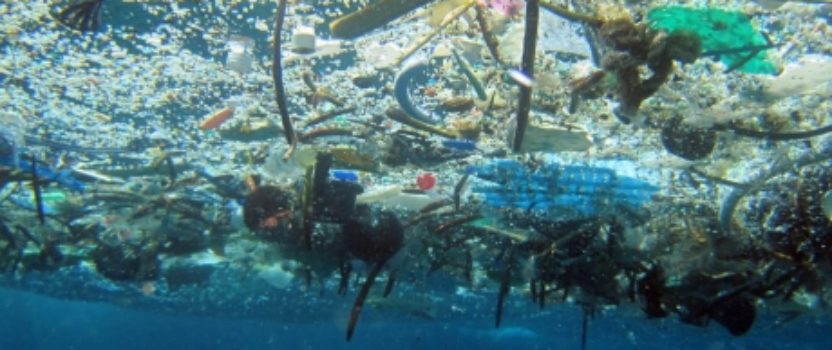6 Ways Divers Can Reduce Plastic Pollution in Our Oceans

Photo by TexasVox
Every January, millions of people will resolve to workout more often, eat better, drink or smoke less. But there’s one new year’s resolution we hope everyone will make: reducing their use of disposable plastic.
A recent report found:
– Only 9 percent of plastic gets recycled
– 12 percent is incinerated, and the rest ends up in landfills, oceans and other natural environments.
– About half of all the plastic that’s ever been produced has been made in the past 13 years alone.
Think about the single-use plastic items you use every-day, and imagine the pile of straws, lids, and other items you’ve used throughout your lifetime. If the thought scares you (and it should), resolve to keep your personal pile from getting bigger and help us spread the word to others.
Why Recycling Isn’t Enough
Unfortunately, many types of plastic aren’t recyclable. The familiar triangle only indicates the type of plastic (1-7) and many types can’t be recycled. Typically, number 2, 4 and 5 plastics can be recycled, but always check with your local facility. Generally speaking, styrofoam, cling wrap, plastic bags and plastics with food waste are not recyclable. Recycling also requires a lot of energy as the materials must be transported, processed and remanufactured. Lastly, products made from recycled plastic often aren’t recyclable a second time.
5 Easy Ways to Use Less Plastic
The best way to keep plastic out of our oceans is to reduce the amount of plastic you use. Reusable shopping bags are a great first step. Below are five additional ways you can make a positive impact.
Stop Buying Bottled Waters
There is no evidence that bottled water is better for you than tap water, in fact, it may be harmful. But there is a preponderance of evidence that bottled water is terrible for the environment.
- It takes three liters of water to make a one-liter plastic bottle, and that doesn’t include the liter of water you actually drink
- Transporting bottled water releases a massive amount of CO2 into the environment
- Plastic water bottle caps aren’t recyclable
If there is an issue with the quality of your local tap water, purchase a pitcher or water bottle with a filter. If you prefer sparkling water, buy a SodaStream or make your own carbonation rig (hey, you get to use a tank and a regulator).
Encourage others to reduce their use of single-serving water bottles. If your company provides bottled water at meetings, ask them to consider a water pitcher and reusable cups instead.
Use a Hot Beverage Tumbler and Avoid K-Cups and Coffee Pods
Paper drink cups eventually biodegrade, but the plastic lids last approximately 1,000 years and aren’t recyclable. Single-serving coffee pods, also known as K-Cups, pose a similar problem. Why use disposable coffee products when you can have a fun mug that says: “I’m hilarious, interesting, and I care about our ocean planet”?
Just Say “No” to Straws
Straws are one of the most sinister forms of plastic pollution. They are dangerous to marine animals, and aren’t recyclable.
- According to Ocean Conservancy, plastic drinking straws and cups are consistently in the list of top 10 list of items collected in beach clean ups.
- The NRDC reports 80 percent of marine litter originates on land and is swept into waterways via storm drains and sewer overflows during heavy rain.
- If you need straws in your life, try these reusable and biodegradable bamboo straws.
Switch to Reusable Snack Bags
Save money and be a better friend to the environment with reusable snack bags. Choose from leak-proof, dishwasher-safe bags, or zipper bags with a fun design for dry snacks.
Never Use Products Containing Microbeads
Microbeads are tiny plastic pellets found in beauty products and household cleaners. The filters at water treatment plants can’t capture them because they’re too small, so they end up in our oceans and waterways. The microbeads are subsequently ingested by marine life (including fish, oysters and other animals that are later consumed by humans). For natural scrubbing power, choose products with oatmeal or baking soda instead.
Take It One Month at a Time
If the list above seems like a lot to take on, try eliminating just one product at a time. Make a plan for your year of plastic reduction. Start with weaning yourself off disposable drink cups in January, move to reusable snack bags in February, make March the month you say no more straws, and so on.
Or, try avoiding single-use plastic for thirty days. If you can’t commit to a full thirty days, try it for a week or even one day. Challenge your dive buddy to see who can go the longest without using disposable plastic.








Leave a Reply
Your email is safe with us.